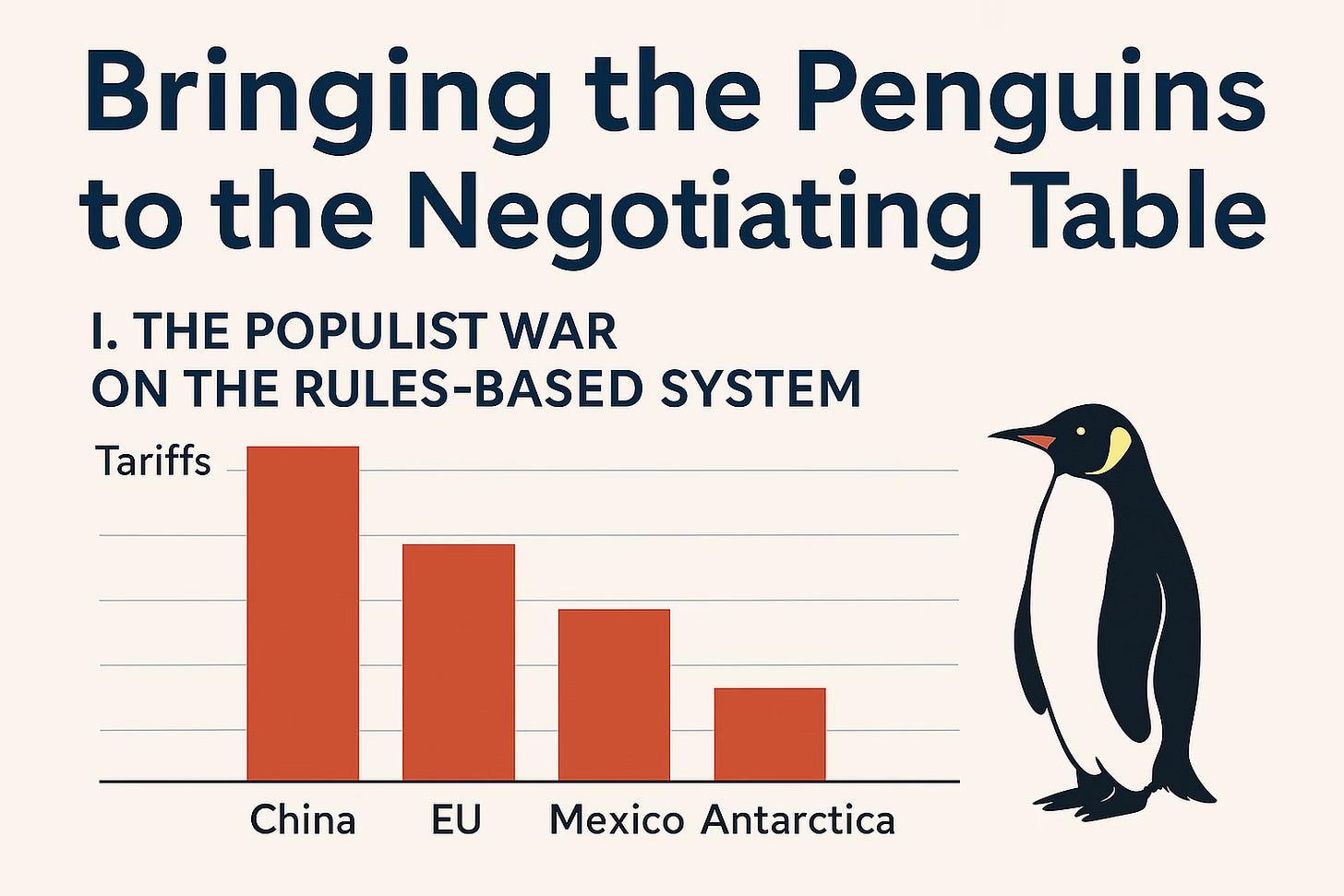Bringing the Penguins to the Negotiating Table
Tariffs, Populism, and the Fracturing of the Global Economic Order
Karim Pakravan has been a regular contributor to econVue since 2016, focusing on global trade and international finance.
econVue is committed to offering expert analysis and diverse viewpoints, curat…




